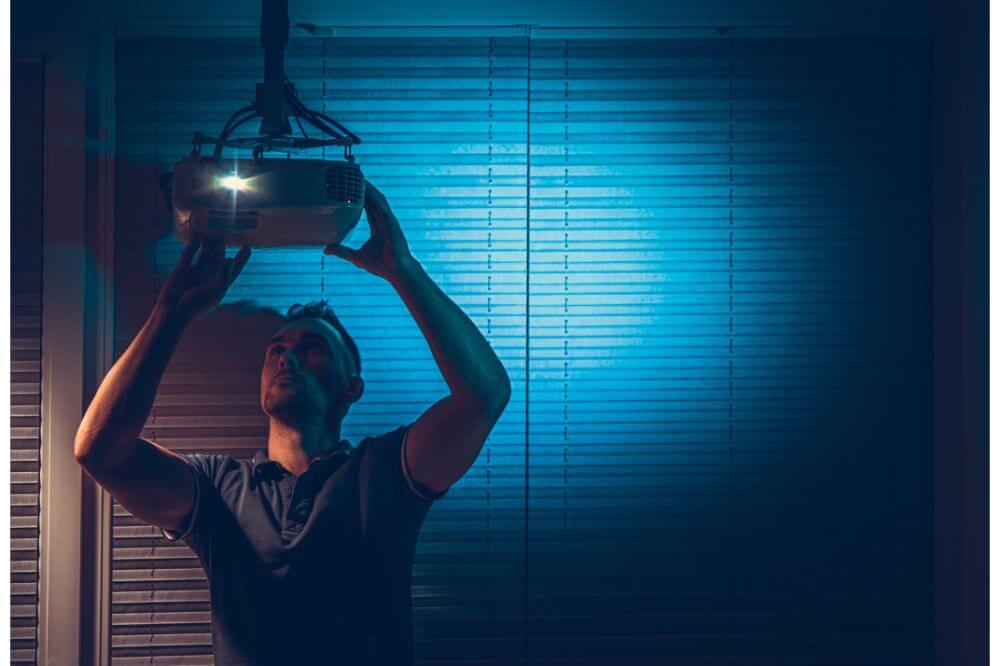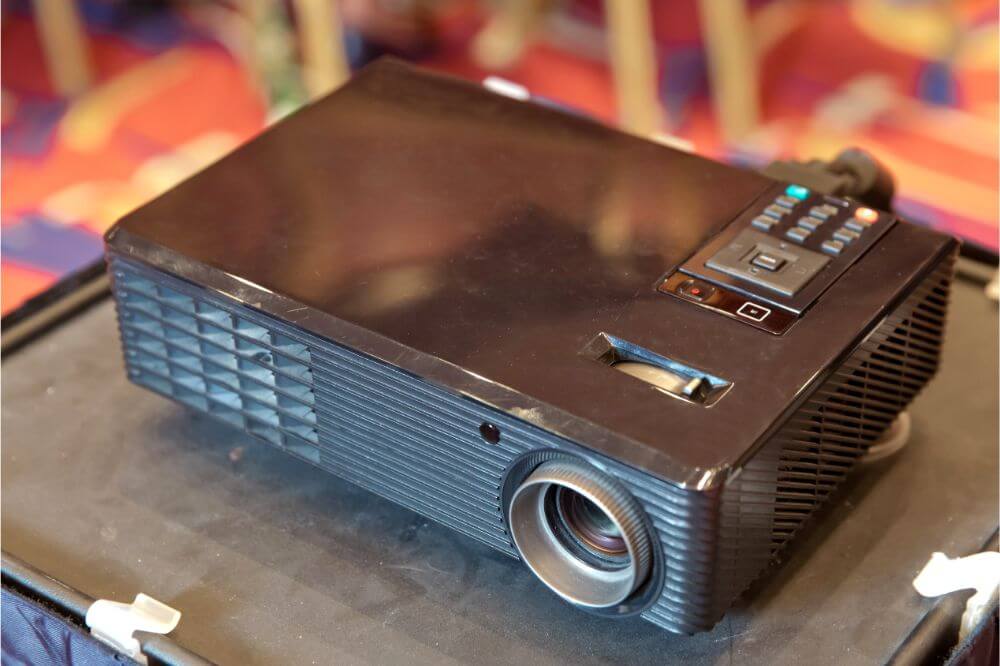Having a projector at home is a great way to upgrade your entertainment options. A projector and screen allow you to enjoy theater-quality entertainment, and give you the option for large-scale experiences that are more affordable and flexible than giant-screen televisions.
Today’s home projectors are capable of incredible image quality and have more options than ever before. Here is an overview of the key types of projectors for a home theater.
Types of Projectors for Home Theater: Image Technologies
The technology a projector uses to create the image is a critical differentiator between projector types. However, we don’t yet have the perfect image technology – each one has advantages and disadvantages. Here is an overview of the different types:
LCD
LCD stands for Liquid Crystal Display, and is the image technology found in most televisions. An LCD projector uses three liquid crystal panels in red, green, and blue, and each panel projects their color.
LCD pros
- Great color saturation
- Crisp images
- Produce more lumens
LCD cons
- Lower contrast
- Early and low-end LCDs can be prone to the “screen door effect” where you can see the lines between pixels
DLP
DLP stands for Digital Light Processing. It works by means of a tiny chip with thousands of mirrors on it. As the projector’s lamp sends light toward the chip, the mirrors angle toward the screen, projecting light and color, or away from the screen.
High end DLP projectors have three separate chips, in red, green, or blue, while low-end DLP projectors use a color wheel that filters the light to create color.
DLP pros
- More compact in size
- Higher contrast
- Reduced pixilation
DLP cons
DLP technology relies on a color wheel that moves more quickly than the eye can see, but some people can see these rapid color sequences, creating a “rainbow effect.” For those people, the effect can range from being distracting to causing eye strain and headaches.
It affects a small percentage of people, but is a pretty big drawback, because you can’t know if the friends you are inviting over for movie night or the big game may be susceptible to this flickering.
LCoS
LCoS stands for Liquid Crystal on Silicon, and is the latest projector technology, used in very high-end machines. They work in a hybrid fashion, with liquid crystal chips that have a mirrored backing: like DLP, they use mirrors to project light, and like LCD they use liquid crystal to block light.
LCoS pros
- Best contrast ratio
- Deepest black levels
LCoS cons
Reduced brightness
Types of Projectors for Home Theater: Resolution
Resolution is critical in a projector, because the image you see can never exceed the maximum resolution of the projector. In other words, even if you are receiving an HD signal or playing a 4K movie, an XGA projector will never display it.
As a general rule, it’s always best to choose the highest resolution you can afford, so that you can get the most enjoyment from your media and maximize the value of your projector. HD is the most popular resolution to date.
XGA
- XGA has a maximum of 1024 x 768 pixels.
- Wide XGA. Wide XGA or WXGA has a maximum of 1280 x 800 pixels.
- HD. HD has a maximum of 1920 x 1080 pixels.
- 4K Ultra HD. 4K Ultra HD has a maximum of 4096 x 2160 pixels.

Types of Projectors for Home Theater: Projector Placement
Another key feature for a home theater projector is where you will place the projector in the room.
Ceiling Mounted
A ceiling-mounted projector is a great way to keep your projector out of the way in your living space, and preserve optimal viewing settings, so that your alignment and focus are the same every time. Mounting the projector on the ceiling also means that people can usually sit right in front of the screen without blocking the projection.
They can also be more difficult to install, because you have to supply power and cables to a spot on the ceiling, and may be more difficult to adjust if you are using your projector for a wide array of media experiences.
Table Top
Table top projectors are easy to store when not in use, then quickly set up when you want them. However, people typically have to sit beside the projector, instead of in front of it, and you may need to adjust the alignment, focus, and other settings every time.
Conclusion
As you can see, there are many different types of home theater projectors. You need to choose the right image technology, the right installation and setup, and the right display properties and resolution for your needs.


